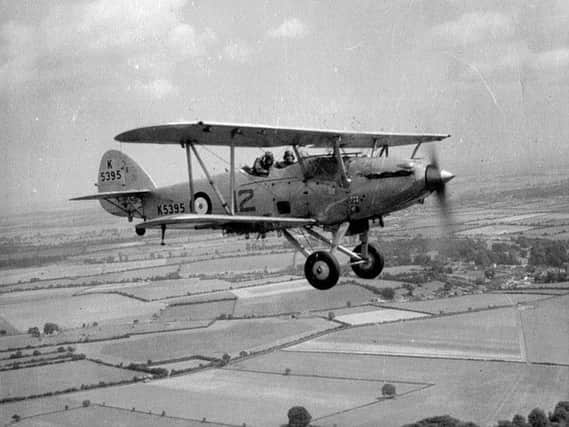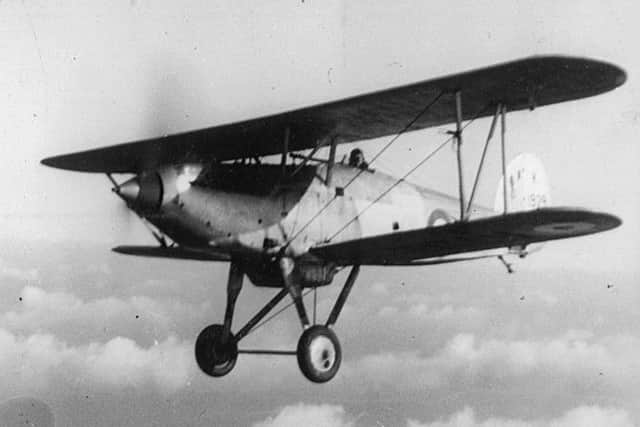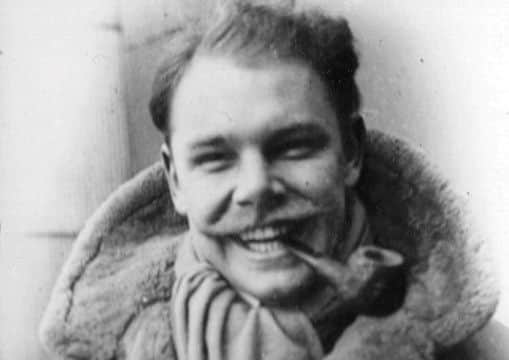WWII pilot left behind incredible photo collection


Wing Commander Roger Morewood, from Rockcliffe, Dumfries, joined the Royal Air Force (RAF) in 1935 and served the duration of WWII.
He died last week, aged 98.
Roger was an enthusiastic photographer who had attended the Edinburgh College of Art before joining the forces on the advice of his uncle, aged 19.


Advertisement
Hide AdHe clocked up an incredible 5,000 flying hours in 32 different types of aircraft and took many remarkable pictures while behind the controls of his aircraft.
Part of his legacy is a collection of photos of his wing-mates and their planes, often taken while formation flying during combat missions, which his family now treasure.
His daughter Rowena Buck, 62, described Roger as “the archetypal RAF pilot” thanks to his handlebar moustache and always-popped flying collar.
She said: “He was the archetypal RAF pilot. Blue eyes, blond hair which was too long, a handlebar moustache and his collar always up.


“He felt that he did a lot of bread and butter work that was less colourful to describe, but he put so much time into flying he clocked up more than 5,000 hours in the air.
“He took a lot of photographs during the war, most of which we have in an album and will be going through with the family next week.”
Advertisement
Hide AdRoger’s training saw him first take to the sky in a Tiger Moth biplane before his posting to the elite 56 Squadron in 1937 which, at the time, flew open-cockpit Gauntlet fighters.
He then moved on to flying the Gloster Gladiator, the RAF’s last biplane fighter.
Advertisement
Hide AdBy the outbreak of war he was already an experienced pilot and later acquired the new Hurricane fighter, which he believed were superior to the more famous Spitfire.
Roger transferred to the newly reformed 248 Squadron as flight commander, and for three years flew Bristol Blenheims in the Battle of Britain, described as ‘bombers dressed up as fighters’.
CONNECT WITH THE SCOTSMAN
• Subscribe to our daily newsletter (requires registration) and get the latest news, sport and business headlines delivered to your inbox every morning
His daring endeavours saw him undertake dangerous long-range fighter sweeps over Holland and the French coast, before he was promoted to wing commander in 1944.
The promotion saw him assigned to Castel Benito near Tripoli in Libya, a posting which he thoroughly enjoyed.
Roger was sent on to Naples as station commander in 1945 where he saw out the war’s end before he left the RAF in 1947.
Advertisement
Hide AdBut he returned to service in 1951 and finally retired in 1957.
Following his retirement, Roger and his wife, Rosemary, started a successful boarding kennel in Aberdeen.
Advertisement
Hide AdIn 1981 they moved to Rockcliffe where they pursued their interests until Rosemary sadly died in 2003.
Rowena said: “He did come across skirmishes in the sky and on one occasion he did limp home and his Blenheim was described as looking like a cheese grater from the amount of bullets in it.
“Roger came down unscathed however, and the ground crew patched the plane up again and it was returned to service for a while until it was later lost.”
Rowena described Roger’s experience of flying the Bristol Blenheims, which were outmatched in speed and armour against the Luftwaffe’s more modern fighters.
She said: “They were bombers which were dressed up as fighters as they had put on some extra guns, but they weren’t fast so you could not give good chase to enemy planes.
“And if they chased after you, you couldn’t outrun them, so they nicknamed it the Flying Coffin.
Advertisement
Hide Ad“A lot of men flew less hours and never made it through the war, so it’s miraculous he survived.”
In 2013, Roger was honoured with a special Battle of Britain fly-by from a Hurricane and a Spitfire at his home in Barlochan House in Palnackie.
Advertisement
Hide AdHis funeral will take place at Colvend Parish Church in Rockcliffe at 11am on Friday December 19.
SCOTSMAN TABLET AND IPHONE APPS